How to cook game
The best ways to cook pheasant and mallard, from Simon Hopkinson
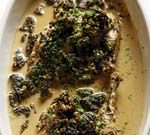

Roast pheasant with morels, vermouth and cream Serves 2 I first learned to make this sumptuous and undeniably rich recipe as a school-holiday apprentice in the kitchens of a French restaurant, at the age of 16. Even for this keen and (relatively) fearless teenager, the pungent pong of a dried morel mushroom was, how shall we say, novel. However, once it was reconstituted into the sauce for the finished dish, novelty was ins-tantly transformed into Nirvana. Quite possibly one of my earliest magic moments, culinary-wise. Note: a hen pheasant will always be more tender and succulent than a cock.
1 oven-ready hen pheasant A little softened butter Salt and pepper 1 large shallot, coarsely chopped Juice of half a small lemon A few sprigs of thyme 200ml dry vermouth-plus a little extra 20g dried morels 200ml whipping cream A little finely chopped parsley
NOTE: Pre-heat the oven to 220˚C/gas mark 7.
Method
Using your hands, smear the pheasant with the butter and then generously season. Place it into a solid roasting dish, sprinkle the shallots around it, squeeze the lemon juice over it, tuck the thyme into its cavity and pour the vermouth over it.
Cover the dish with foil, slide into the oven and cook for 25 minutes. Put the morels into a small bowl and cover with boiling water by about 1cm. Leave to soak for at least 10 minutes. Take the pheasant from the oven and remove the foil (don't discard it). Baste it with the buttery juices and reduce the oven temperature to 190˚C/gas mark 5.
Cook the bird for a further 20 minutes, uncovered, and occasionally attend to it by more basting, while also observing as to whether the liquid surrounding the bird needs topping up; if so, add a splash more vermouth. Once the skin of the pheasant is nicely burnished and the breast meat feels firm to the tweak of a finger, remove from the roasting dish and keep warm, loosely covered with the reserved foil.
Sign up for the Country Life Newsletter
Exquisite houses, the beauty of Nature, and how to get the most from your life, straight to your inbox.
Now, place the roasting dish directly onto a moderate flame and tip in the soaked morels, together with their soaking juices and stir together. Bring up to a simmer and allow to reduce until slightly syrupy and deeply flavoured; this should take about 15-20 minutes.
Once you've dipped in your finger and are happy with the taste, pour in the cream and stir together. Bring back to a simmer and leave to quietly bubble away until the sauce is unctuous and creamy, but not too thick.
To serve, carve the pheasant and arrange on a heated serving dish. Spoon the beautiful morel cream sauce over it, sprinkle with parsley (just to pretty the thing) and offer nothing more than a dish of simply cooked green beans, say, at table.
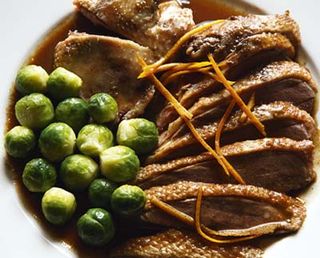
Salmis of mallard bigarade Serves 2
An exact sauce bigarade recipe traditionally calls for bitter oranges (Seville), but I've always found that everyday oranges will work just fine here, as well as offering up more juice than a Seville. Ingredients
1 oven-ready mallard A little oil Salt and freshly ground pepper 2tbspn Port, plus a little extra 1tbspn Cognac 1tspn red-wine vinegar 1tbspn dark marmalade 2 oranges-the juice and grated zest of one; the zest of the other thinly pared with a potato peeler into strips 1tspn potato flour, or arrowroot, slaked with a little extra Port Watercress
* Subscribe to Country Life and save up to 40% this Christmas
Method
Preheat the oven to 220˚C/gas mark 7. Rub the mallard with a smear of oil, then season well (the oiling simply helps the seasoning to adhere). In a small and solid roasting tin, cook on the top shelf of the oven for 25 minutes, basting once. Remove and leave to rest for at least a further 20 minutes or until cool enough to handle. Keep the oven switched on. Remove the breasts and legs from the bird and put onto a plate.
Roughly chop up the carcase with a heavy knife and return to the roasting tin. On a moderate heat, stir it all around until well crusted. Add the Port and Cognac and ignite them. Once the flames have died down, pour in enough water to just cover the bones and add the vinegar.
Introduce the orange zest and juice from the first orange, stir everything together and allow to simmer for about 45 minutes; if you wish, you could do this in the oven.
Take the strips from the second orange and slice into a fine julienne. Put into a small pan and cover with boiling water. Leave for a few minutes and then strain. Put to one side.
Once the duck stock is ready and you're happy with the flavour-it should be good and ducky-strain it through a fine sieve into a shallow pan. If you feel that the flavour is a touch insipid, reduce over a high flame.
Check for seasoning and then lightly thicken the gravy with the slaked potato flour (or arrowroot) until of a coating consistency, but take care not to over-thicken. Add the res-erved orange julienne and stir in.
Now, slide the duck pieces into the sauce and quietly reheat for no more than 3-4 minutes, or so; they need to remain pink. Once hot, place onto two hot plates, spoon the sauce over them and serve with a sprightly garnish of watercress. Very good indeed with a buttery celeriac purée.
* Follow Country Life magazine on Twitter
Country Life is unlike any other magazine: the only glossy weekly on the newsstand and the only magazine that has been guest-edited by HRH The King not once, but twice. It is a celebration of modern rural life and all its diverse joys and pleasures — that was first published in Queen Victoria's Diamond Jubilee year. Our eclectic mixture of witty and informative content — from the most up-to-date property news and commentary and a coveted glimpse inside some of the UK's best houses and gardens, to gardening, the arts and interior design, written by experts in their field — still cannot be found in print or online, anywhere else.
-
 If heaven is on earth, it might be in this home with a converted chapel that is now a swimming pool
If heaven is on earth, it might be in this home with a converted chapel that is now a swimming pool5 Wood Barton Town House is part of an exclusive 80-acre development in Devon that also comes with fishing rights on the River Avon and four bedrooms.
By James Fisher Published
-
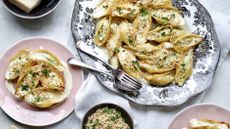 An Italian-inspired recipe for lemon-butter pasta shells with spring greens, ricotta and pangrattato
An Italian-inspired recipe for lemon-butter pasta shells with spring greens, ricotta and pangrattatoSpring greens are just about to come into their own, so our Kitchen Garden columnist reveals exactly what to do with them.
By Melanie Johnson Published
-
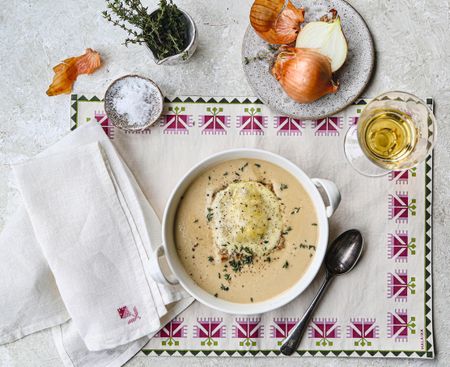 A Continental winter warmer: creamy onion soup with caramelised-onion toast
A Continental winter warmer: creamy onion soup with caramelised-onion toastSo long the bridesmaid, onions finally get their moment in the spotlight with this delicious and comforting winter soup.
By Melanie Johnson Published
-
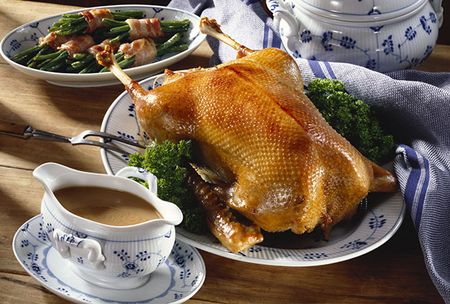 Perfect roast goose recipe from Mark Hix
Perfect roast goose recipe from Mark HixCooking the perfect Christmas goose, with delicious gravy, is a fantastic way to celebrate Christmas. Mark Hix explains how it's done.
By Country Life Published
-
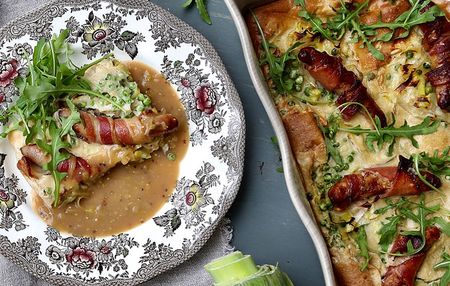 How to make Toad in the hole, the ultimate British comfort food
How to make Toad in the hole, the ultimate British comfort foodTry Melanie Johnson's recipe for toad in the hole – the ultimate British comfort food – with a twist thanks to the addition of bacon and leeks.
By Melanie Johnson Published
-
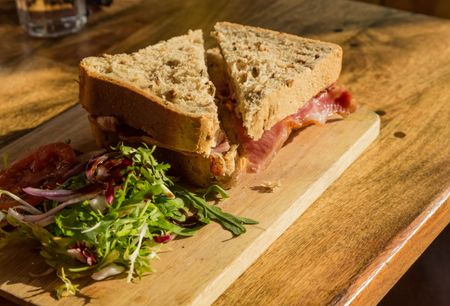 The ultimate Boxing Day bacon sandwich – with a surprise ingredient
The ultimate Boxing Day bacon sandwich – with a surprise ingredientSImon Hopkinson shares his recipe for a bacon sandwich with a perfect Christmassy twist.
By Simon Hopkinson Published
-
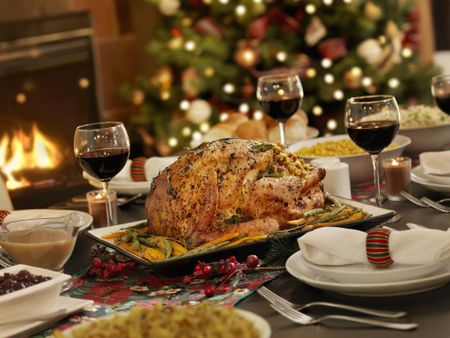 The step-by-step, stress-free plan for cooking Christmas lunch, by Tom Aikens
The step-by-step, stress-free plan for cooking Christmas lunch, by Tom AikensTom Aikens shares his recipes and advice for the perfect Christmas lunch: turkey, cranberry, roast potatoes and all the trimmings
By Country Life Published
-
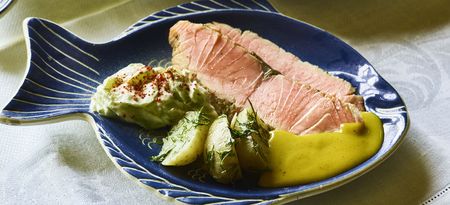 Recipe: Simon Hopkinson's Gravadlax, a delightful Swedish cured-salmon dish
Recipe: Simon Hopkinson's Gravadlax, a delightful Swedish cured-salmon dishNothing packs the same aromatic punch as a home-cured salmon flavoured with dill fronds and schnapps – and if you have too much, try poaching the leftovers. Poaching instructions before the recipe.
By Simon Hopkinson Published
-
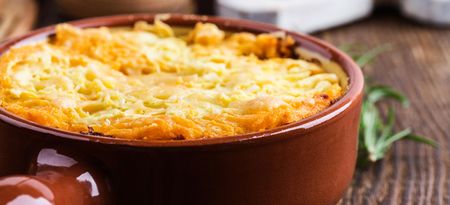 A delicious shepherd's pie recipe to take away the winter chill
A delicious shepherd's pie recipe to take away the winter chillShepherd's pie is a true British classic which always hits the spot – this delicious take on the dish comes from chef Christian Turner.
By Toby Keel Published
-
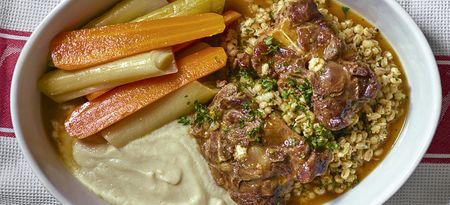 How to make a delicious Irish stew without potatoes
How to make a delicious Irish stew without potatoesAn Irish stew without potatoes might sound like a contradiction, but this lamb-neck and pearl-barley recipe gives the classic winter dish a rich twist.
By Simon Hopkinson Published
